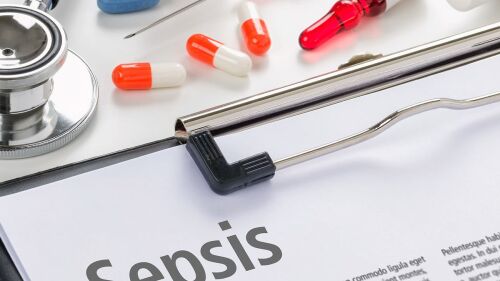By Alena Maschke
The Advocate
LAFAYETTE, La. — She didn’t know it yet, but when Kathryn Duncan’s husband was admitted into Our Lady of Lourdes Regional Medical Center on March 26, 1998, their family’s life would change forever.
Shea Duncan, who was 38 years old at the time, had been in great health when suddenly, he wasn’t feeling well. Their family doctor thought he had the flu and sent him home with antibiotics. Two weeks later, Duncan’s condition worsened. At one point, every inch of his body was so painful to the touch, he couldn’t even bear the feeling of the bedsheets on him.
Duncan, who worked in construction and owned his own trucking company, had contracted a staph infection — likely during his work on construction sites — that had developed into sepsis, an overreaction of the immune system to an infection or injury that damages the body’s tissue and organs. This episode set off a series of surgeries from which he would never fully recover.
Sepsis is notoriously difficult to diagnose, especially in an emergency setting, but with the help of a new diagnostic tool, doctors at Lourdes say they can now detect it within about 10 minutes — and save lives as a result.
“The difficulty with sepsis is that the presentation often has a variety of different characteristics,” said Dr. Chad Vincent, a hospital-based internist at Lourdes. “Often their symptoms change rapidly over a short period of time, and in busy emergency departments, time is always of the essence.”
The new diagnostic tool, IntelliSep, allows for the rapid testing of a standard blood sample and analyzes the white blood cell response, which in turn allows doctors to make a diagnosis more quickly than traditional methods.
In Duncan’s case, staff at the hospital performed a spinal tap, which they told his wife would take five days to analyze. It was when Kathryn Duncan noticed unusual spots on his hands and feet that she asked for an infectious disease doctor to take a look, who discovered the staph infection and sepsis. Had they waited for the results of the spinal tap, the doctor told her, her husband wouldn’t have survived.
Shea Duncan, while surviving that terrifying day, battled the long-term effects of the surgeries that followed for nearly two decades and eventually died at age 58.
“This was the downfall, not being able to catch this early enough,” Kathryn Duncan said. “Had they had that technology back then, we’d probably still have Shae today.”
While other potentially fatal health issues can be identified more easily — heart problems can be detected using an EKG, stroke symptoms with the help of a CT scan or MRI — no comparable technology has existed for sepsis, Vincent points out.
“It’s been kind of a void in terms of tools and diagnosing sepsis,” he said.
Out of 1.7 million patients diagnosed with sepsis annually, 270,000 die. This doesn’t include cases like Duncan’s, in which a patient suffers long-term health effects leading to an untimely death.
“It’s the leading cause of death in the hospital,” Vincent said.
For many vulnerable patients, it can be what pushes them beyond the possibility of healing. Samantha Singletary, a hospice nurse, said many of her patients come from long-term care facilities or hospitals and end up in her care because sepsis pushed them over the brink.
Urinary tract infections or pneumonia are often the root cause and if identified too late can lead to sepsis that is too much for an already elderly or sick patient to handle.
“It takes a little while to figure out why grandma is confused,” Singletary said. “So they usually go when they’re in dire straits and needed intervention yesterday, so it’s hard to bring them back out of that.”
Louisiana State University and Franciscan Missionaries of Our Lady Health System were among just a handful of universities and hospital systems in the country to pilot the new technology. After a successful year at Our Lady of the Lake in Baton Rouge, it is now being deployed in Lafayette.
Vincent estimates that in the three weeks since it has been deployed, hundreds of patients’ samples have been tested. Based on the data collected in the pilot program in Baton Rouge, Lourdes anticipates that the new technology will save one life for every 500 high-risk patients. Based on the throughput of emergency departments, this could mean one life saved about every two weeks.
Although the technology is still very new in Lafayette, Vincent said he’s already seen its impacts. “We’re already starting to see practice patterns change, where we find that IntelliSeps is allowing us to initiate that early, aggressive treatment that’s so vital in making sure that people are protected from the complications of sepsis,” Vincent said.
(c)2024 The Advocate, Baton Rouge, La.
Visit The Advocate, Baton Rouge, La. at www.theadvocate.com
Distributed by Tribune Content Agency, LLC.









